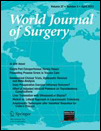Observation of Vocal Fold and Pharyngeal Paralysis After Carotid Endarterectomy Using a Magnifying Laryngoscope
Abstract
Background
Injury to the vagus nerve or one of its branches during carotid endarterectomy (CEA) can result in vocal fold paralysis (VFP), but the exact mechanisms and site of injury responsible for VFP after CEA are unclear. The aim of this study was to identify the site of nerve injury in patients with VFP after CEA using magnifying laryngoscopy.
Methods
We performed 96 consecutive CEA procedures in 87 patients over 5 years. After 56 CEA procedures, we examined vocal fold movements with a flexible nasolaryngoscope and detected VFP in 5 of 40 cases (9 %). At 6–8 weeks after CEA, these five patients also underwent magnifying laryngoscopy at another institution by a specialist in vocalization.
Results
We confirmed ipsilateral VFP and pharyngeal paralysis in three patients. The other two patients recovered from their nerve injuries spontaneously before the magnifying examination.
Conclusions
VFP and pharyngeal paralysis were caused by damage to the recurrent laryngeal and pharyngeal nerves. Therefore, the probable site of nerve injury during CEA was near the inferior vagal ganglion of the vagus nerve trunk in our three patients.




